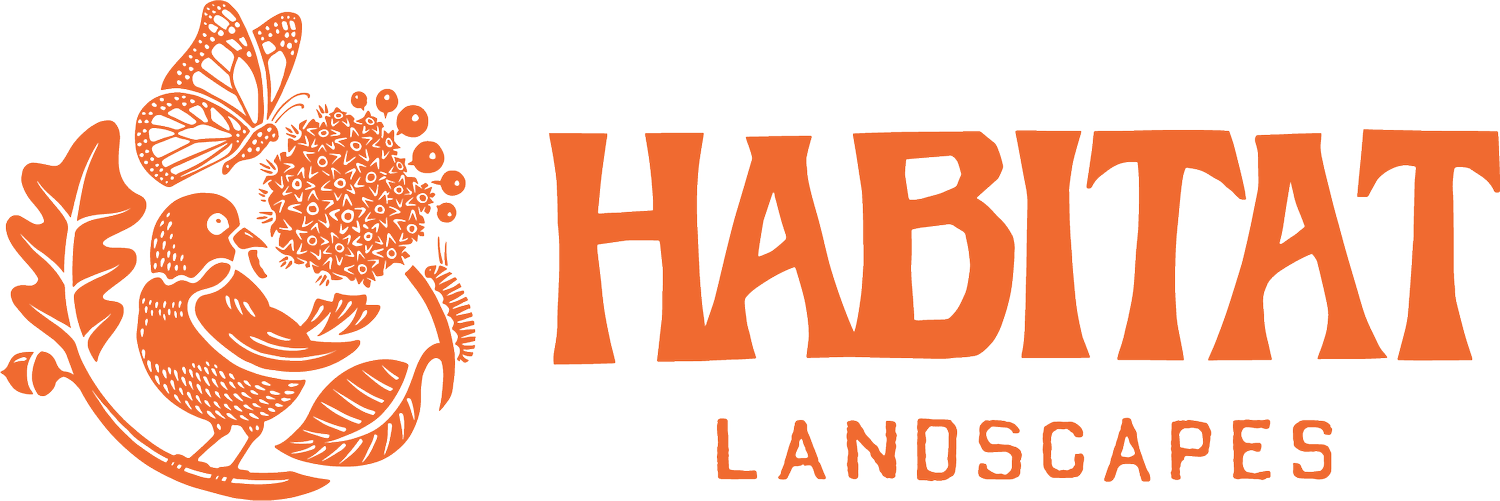Expanding Habitats with Native Plant Seed Collection: A How-To Guide
Why Collect Native Seeds?
Native plants provide critical food and habitat for pollinators. By collecting seeds from plants that already thrive on your land, you’re working with species that have adapted well to local soil and climate conditions. Additionally, collecting your own seeds reduces the need for commercial seed purchases, which can be expensive and sometimes results in plants that are less resilient and regionally adapted.
Step 1: Prepare for Collection
Materials Needed: Hand tools (scissors or pruning shears), gloves, collection bags/envelopes, dropcloth, deli cup/tupperware, and, optionally, gauze bags for lightweight seeds (like milkweed) that can disperse easily.
Planning Collection Time: Wildflower seeds are generally ready for collection two to five weeks after the plant blooms. The seeds should be firm, dry, and darker in color when they are ripe. Fruit can be gathered right after it has dropped to the ground. It is best not to use fruit or seeds that have been sitting on moist ground. Weather and environment can affect timing, as warm, dry conditions may speed up ripening, while cooler, damp conditions can delay it.
Step 2: Responsible Collection Practices
To ensure sustainable harvests and conserve wild populations, follow these collection guidelines:
Collect Only Ripe Seeds: Wait until seeds are hard and dry. Immature seeds (green or soft) are unlikely to germinate well.
Limit Collection to 10-20%: Avoid overharvesting, especially from smaller populations. This balance helps plants naturally reseed.
Respect the Environment: Practice Leave No Trace principles by minimizing disturbance and avoiding soil compaction. Avoid rare species unless you’re working in a restoration context and have proper permissions.
Step 3: Harvesting Techniques
Hand Collection: For small-scale projects, hand collection is often the easiest and most sustainable approach. Use gloves and small bags tied at your waist, leaving both hands free for gathering seeds. For plants with tough or embedded seeds, gently use scissors or shears to cut seed heads.
Mechanical Collection: If collecting large amounts, mechanical harvesters, such as forage harvesters or seed strippers, can save time. Be cautious, however, as machines can also pick up unwanted seeds or damage the soil if not used properly.
Step 4: Seed Cleaning and Drying
After collecting, allow seeds to dry to prevent mold. Place seeds in well-ventilated areas out of direct sunlight. Once dry, clean seeds by separating them from plant chaff. This can be done by hand, using screens, or through winnowing, a process where seeds are poured in front of a fan that blows away the lighter chaff.
Step 5: Seed Storage and Preservation
Store seeds in cool, dry environments to extend their viability. Use envelopes, jars, or bags, and label them with species names and collection dates. Native wildflower seeds can be kept for about a year, but planting sooner is ideal.
Storage Tip: Avoid humidity and extreme temperatures. As a rule, the combined value of storage temperature (in degrees Fahrenheit) and relative humidity (%) should not exceed 100. Only store seeds in plastic or glass if you are sure they have had sufficient dry time.
Seeds of fleshy fruits (like Asimina Triloba/Paw Paw) should be kept moist to maintain viability. If allowed to dry out, they will either germinate prematurely or not at all. This time of seed should be planted immediately or mixed in a one-to-one ratio of moist sand or in a vermiculite or perlite mixture.
Step 6: Planting and Community Sharing
When ready, scatter seeds in prepared areas. Planting uncleaned seeds is fine for smaller spaces, though larger plots benefit from cleaner seed. Sharing seeds with neighbors or participating in seed swaps is a great way to expand native habitats in your area and spread awareness of pollinator conservation.
Sowing Seeds for a Sustainable Tomorrow
Collecting native wildflower seeds is a valuable practice for enhancing biodiversity and creating resilient landscapes. It’s a hands-on way to support pollinators and strengthen ecosystems on our properties and across communities. With each seed you plant, you’re nurturing a small piece of a much-needed wildlife habitat.
Happy planting!








